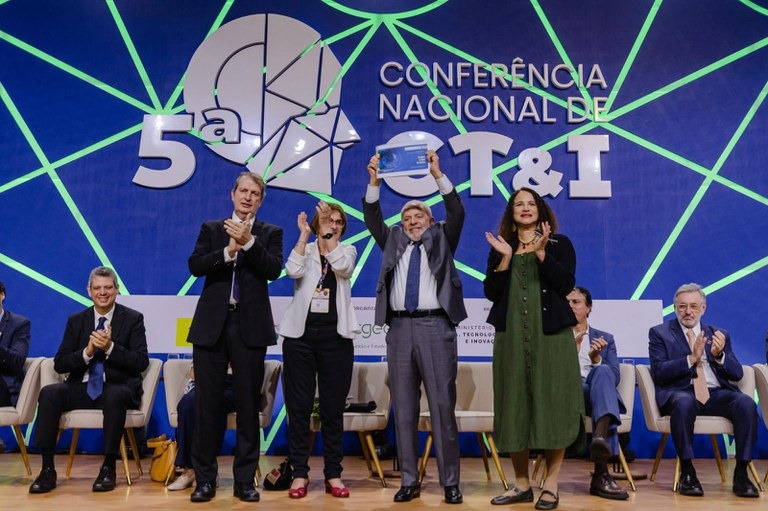This article was originally published at the Jornal da Unicamp. Click here to read the original text.
The new global geopolitics is reshuffling many things, bringing signals about the future, like a box of surprises that, we hope, won’t resemble Pandora’s myth.
Diplomacy, international trade, and countries’ strategic decisions are shifting like tectonic plates, affecting all kinds of government and state policies. Adding to this scenario is political polarization, both national and global.
Far from being excluded, science, technology, and innovation (STI) policies are deeply involved. Since the production and appropriation of knowledge are one of the pillars of the international division of labor, a lot is at stake. And this game is already starting with new rules, albeit not very clear ones. It’s better to keep up with them before the game is played out.
In this context, the V National STI Conference was held in Brasília. Over three days of presentations, there was a diversity of viewpoints but a strong convergence: no one doubts the importance of research and innovation as the driving forces of the ongoing changes.
Some sessions of the Conference focused on the theme of industrial policy (namely, the New Industry Brazil – NIB, launched in January of this year).
Reindustrialization, neo-industrialization, and other terms have been used to highlight one of the tectonic shifts brought about by new geopolitics and new technologies: China is no longer the world’s factory, and cheap production based on cheap labor is giving way to intensified global competition, requiring the physical and strategic repositioning of industries.
The most frequent examples are the relocation of the semiconductor industry and the massive investments by countries in artificial intelligence. And there is much more in this context, such as energy transition, carbon-neutral industries, bioeconomy, inclusion, and wealth distribution, among others.
NIB has six main missions that, in the government’s view, encompass the main challenges and opportunities for promoting industry. It’s hard to disagree with all of this. Industry representatives are involved in NIB, and everyone wants it to be transformed into state policy. In other words, they want the policy to be long-lasting, not episodic, as a strategic position that characterizes Brazil and in which economic and political agents can trust.
Several ministries, BNDES, and other development banks, funding agencies, and industry representatives are involved, as well as the Presidency of the Republic. The resources are significant, although far from the volume of investments that will be needed to tackle the missions. The amount is 300 billion reais (close to 60 billion dollars at the current exchange rate), in addition to expected private investments, both national and foreign.
The enthusiasm is high, at least that’s what was heard in the presentations on the subject at the V Conference.
After years without any industrial policy, Brazil is bringing this topic back to the center of its development strategies – in line with most countries, including the richest and those with a more liberal past.
The challenges of implementing NIB and, even more, making it successful and enduring as state policy are enormous. And the Conference discussions only touched on these challenges. Unfortunately.
Without this debate, we run the serious risk of, once again, falling into voluntarism, always seductive, and almost always deceitful.
It’s not enough to know how to design policy in its broadest terms, create programs, and tout its importance. The festive phase is necessary but largely insufficient. The policymakers should already know this, as there is no shortage of examples.
The recent history of Brazil’s industrial policies, especially those involving STI, which means almost all of them, could be helpful.
Of the last industrial policies, the Industrial, Technological and Foreign Trade Policy (PITCE, 2004-2008), the Productive Development Policy (PDP, 2008-2010), and the Greater Brazil Plan (PBM, 2011-2014), little is known beyond the allocated funds and incentives offered. Incidentally, they also involved various ministries, banks, and other actors from the productive and political systems.
All were examined and debated for what they proposed, never for what they did or failed to do. Everything focused on design, nothing on implementation, nothing on results, and even less on impacts. It’s impossible to know if and to what extent they were successful, much less the reasons why.
When I say nothing, I mean nothing that has any consequence. Here and there, academics or researchers from some planning and evaluation body struggle to obtain data and study the results and success or failure of these policies. These are important and illustrative cases but with little or no influence on the course of things.
The last National Innovation Policy (PNI), which was also supposed to be state policy, was abandoned without much explanation. Good or bad, it should have been taken seriously and, regardless of the government in power, monitored, evaluated, and refined based on what was learned. It ended up being treated as government policy, of the one that left. And note that a monitoring and evaluation system involving 11 ministries was established, but no one paid attention, and time passed like a replayed movie.
The most labor-intensive and difficult part of a public policy lies in its implementation and management. That’s precisely where you can’t afford to be careless or lazy.
For it to be truly new and bring the intended economic and social benefits, it needs to create comprehensive and effective governance, including implementation, management, adjustments, and accountability, all on a platform that allows for the consolidation of data and actions and to know what’s happening.
Otherwise, we just have to wait for the next government change to see the “newest” industrial policy (or its absence, which would be worse).
NIB (or any other industrial policy) will never become state policy through decrees and enthusiastic speeches.
[1] https://www.gov.br/mcom/pt-br/noticias/2024/janeiro/governo-federal-lanca-nova-industria-brasil


